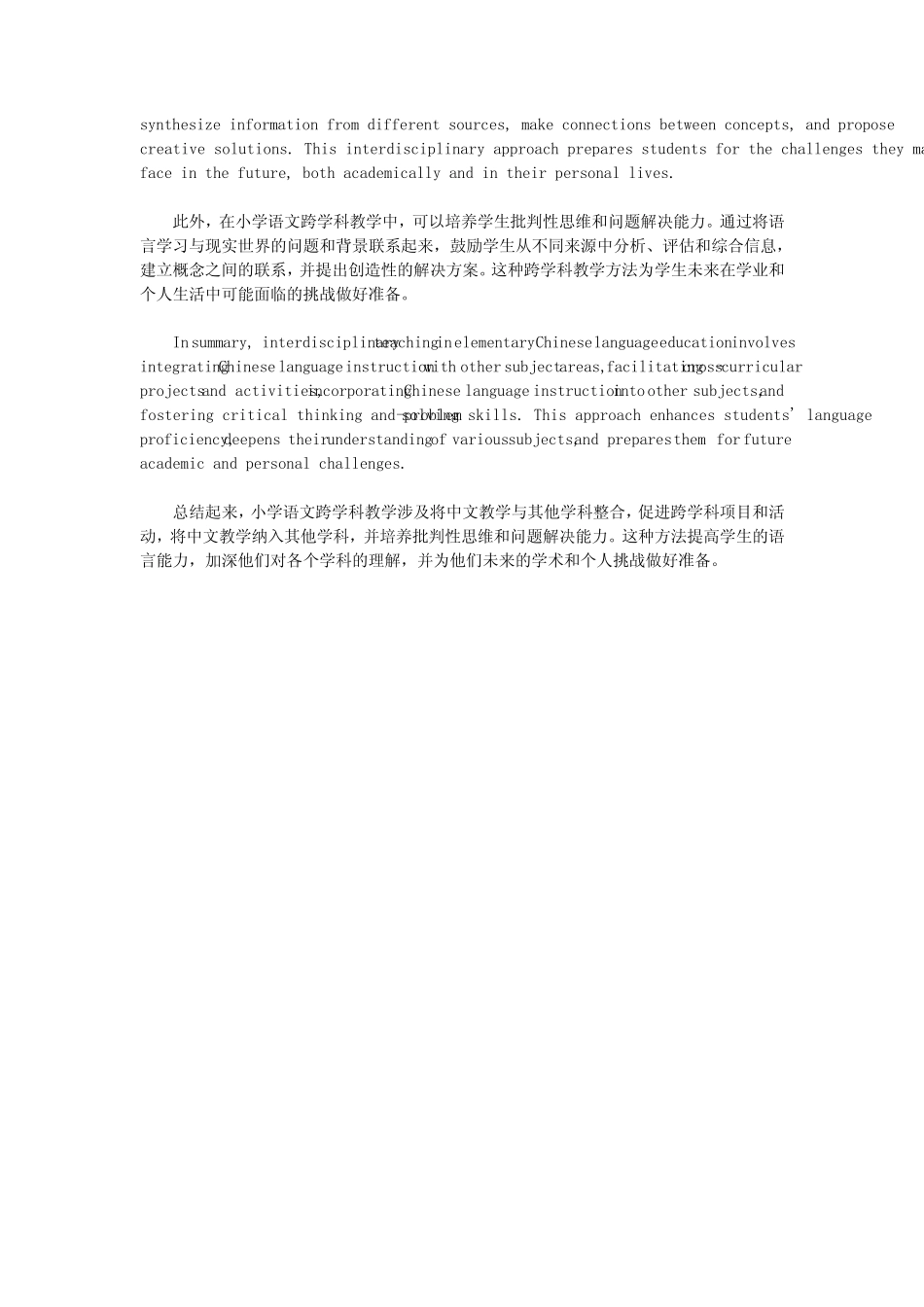小 学 语 文 跨 学 科 教 学 研 究 Research on interdisciplinary teaching in elementary Chinese language education explores the integration of Chinese language instruction with other subject areas, such as mathematics, science, social studies, and the arts. This approach aims to promote a holistic and interconnected understanding of knowledge and skills, enhancing students' ability to apply and transfer their language skills in various contexts. By incorporating interdisciplinary teaching, elementary Chinese language education can become more engaging, meaningful, and relevant to students' lives. 小 学 语 文 跨 学 科 教 学 研 究 探 索 将 语 文 教 学 与 数 学 、 科 学 、 社 会 研 究 和 艺 术 等 其 他 学 科 整合 起 来 。 这 种 方 法 旨 在 促 进 对 知 识 和 技 能 的 整 体 和 相 互 关 联 的 理 解 , 增 强 学 生 在 不 同 情 境 中运 用 和 转 移 语 言 技 能 的 能 力 。 通 过 融 入 跨 学 科 教 学 , 小 学 语 文 教 育 可 以 变 得 更 加 引 人 入 胜 、有 意 义 和 与 学 生 的 生 活 相 关 。 One approach to interdisciplinary teaching in elementary Chinese language education is to facilitate cross-curricular projects and activities. For example, students can engage in research projects that require them to read Chinese texts about a specific topic, analyze data, and present their findings both orally and in written form. This not only strengthens their language skills but also allows them to apply critical thinking, research skills, and content knowledge from other subject areas. 在 小 学 语 文 跨 学 科 教 育 中 , 一 个 方 法 是 促 进 跨 学 科 项 目 和 活 动 。 例 如 , 学 生 可 以 参 与 研究 项 目 , 需 要 他 们 阅 读 关 于 特 定 主 题 的 中 ...

